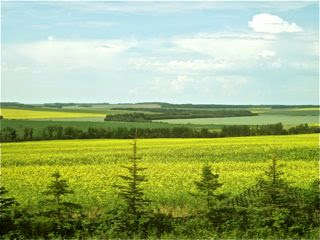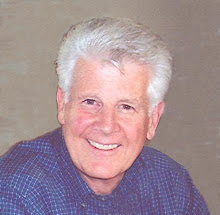A Real Life Safari
The road from Watson Lake to Fort Nelson is described by the Milepost as one of the most scenic on the Alaskan Highway. And they weren’t kidding!
Almost immediately, we were seeing Stone Sheep, lots of them,
and then caribou.
Then, almost immediately we saw a big Grizzly digging for something by the side of the road. Another car was beside him, and he sauntered off, kind of disgusted.
We are at the beginning of the Rocky Mountain Chain at Lake Muncho.
This is also the edge of the Muskwa-Kechika Management Area, a 15 million acre area roughly the size of Ireland. It is called “the Serengeti of the North.” The management area has mixed used, unlike Denali, which is a National Park and is six million acres. These areas are so huge; comparing them to whole states or countries is incomprehensible.
Muncho Lake has a runoff filled with copper oxide, which gives it beautiful green and blue hues. It started to rain, and it was even pretty with big drops breaking the surface.
The mountains here are boulders and gravel, with huge alluvial fans and gravelly riverbeds.
The layers of mountains beyond mountains are vast. The Alaska highway has a lot of different looks along here – narrow clear cuts, wide ones, ones that have been cropped of their vegetation, others that have been allowed to grow higher.
We made a lot of stops along here to take pictures of the caribou and sheep.
See the sheep right in the middle of the picture, just below the last tree branch on the right.
One steep mountain pass provided the perfect habitat for the sheep, the kind you always see in National Geographic. John was able to take a lot of pictures of the sheep as they blended into their environment and watched us from on high. Can you see the baby in this picture? He's right beside the bigger sheep, to the right, about shoulder high.
Then when we reached the summit, the land began to level out. We paralleled the Rockies off to our left, as the land began to look like high river valleys. There were meandering streams, and we saw beaver dams on clear calm ponds that dropped off the horizon.
We saw an elk, a cow with a beautiful shiny coat, but she was on the run and out of sight before we could get her picture.
Roadwork and stoppages for pilot cars brought a reality to the day. The driver in front of us at one stop got out to inspect his rig in his pajamas and slippers! The land begins to look like it could be farmland, and some houses were visible. This is so unlike the areas we have been through where there is nothing, and then a crossroads.
We reach Fort Nelson, originally a Hudson Bay trading post. Three major rivers converge in this valley and the water table is very high. There are wooded areas of aspen, poplar and white spruce. The Hudson Bay Company built a trading post here because they wanted to drive out the independent fur trappers who were paying higher prices to the natives. Fur trapping still exists here, for beaver, wolverine, weasel, wolf, fox, lynx, mink, muskrat and marten. Moose are still an important food source for the First Nations people here, who are Dene, part of the Athabascan tribe. They came here about 1775 from the Great Slave Lake in the Northwest Territory. In 1920, there were 200 "aboriginals" and a few white men.
We had dinner in Fort Nelson and decided to drive on. The evening light made everything look pastoral, only there are no farms here, only trees. We saw more beaver dams and a black bear foraging by the road, his head down and away from us, unperturbed.
It was getting late, and we found a place to pull off the road at an old Provincial Campground at Prophet River, which is no longer operational. It is right on an emergency airstrip (no drug runners, we hope.) We are alone out here, and it feels kind of spooky to me, neat to John. This is one night I want to pass quickly.





























































